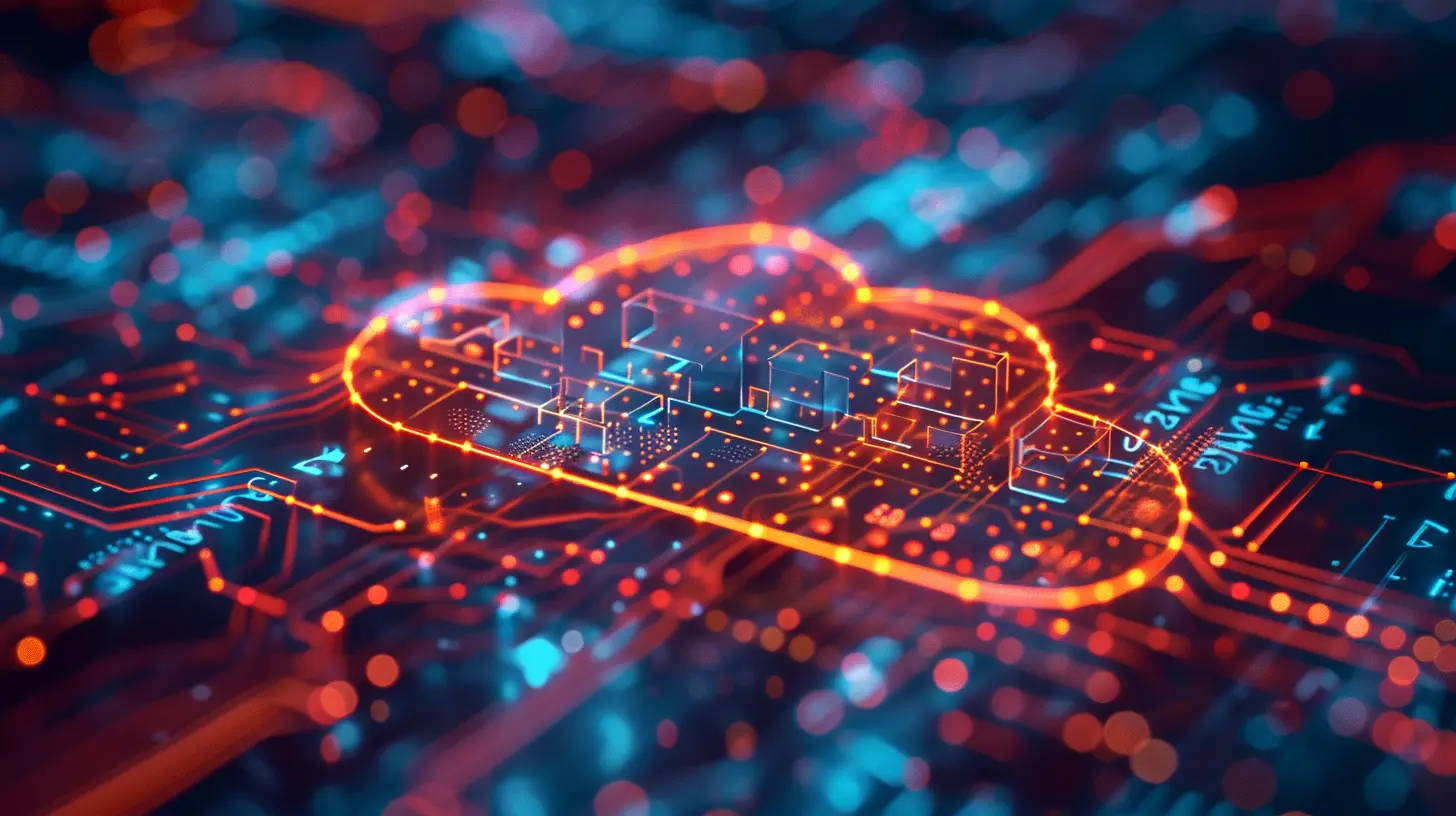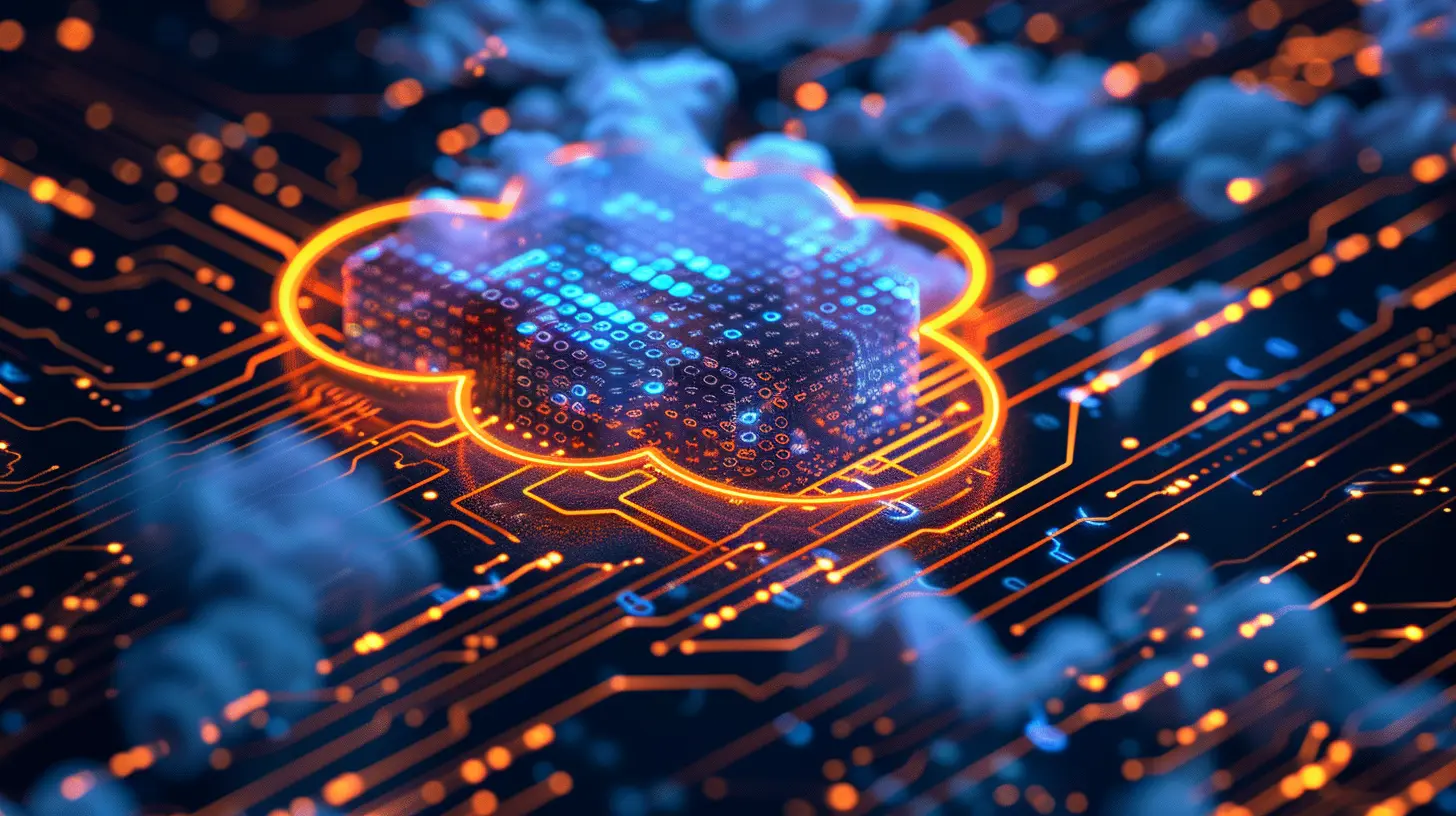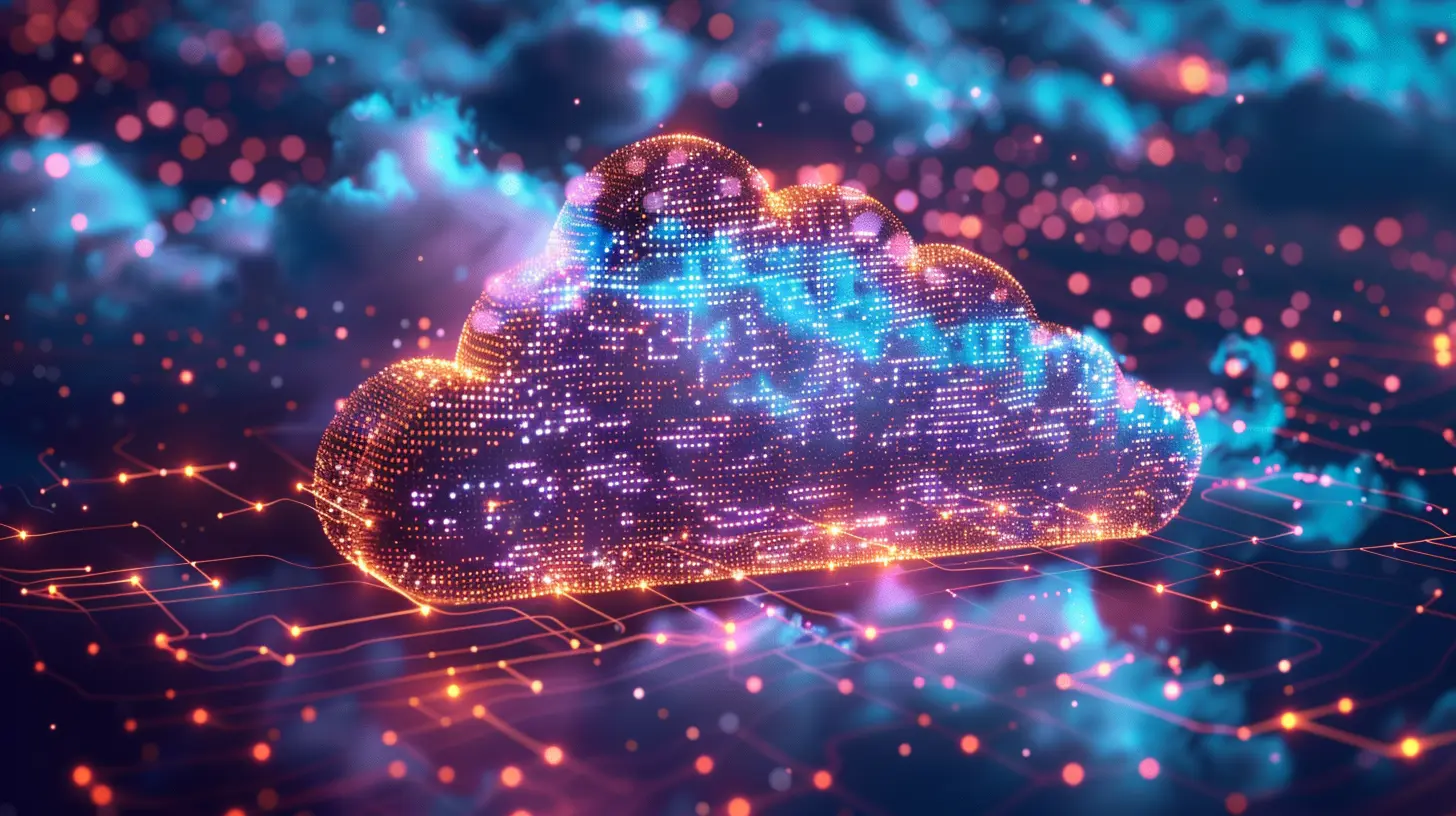Securing Your SaaS Applications in the Cloud Ecosystem
1 April 2025
In today’s fast-paced digital world, SaaS applications have become the backbone of businesses. From project management tools to customer relationship management (CRM) platforms, cloud-based software is everywhere. But with great convenience comes great responsibility—securing your SaaS applications is no longer optional; it's a necessity.
You wouldn’t leave your house with the doors unlocked, right? The same logic applies to your cloud applications. Cyber threats are lurking around every corner, waiting for a chance to exploit vulnerabilities. So, how do you keep your SaaS applications safe in the ever-evolving cloud ecosystem? Let’s dive in. 
Understanding SaaS Security Risks
Before we can secure anything, we need to understand the risks involved. When you shift your business operations to the cloud, you're essentially trusting a third-party provider to store and manage your data. While cloud providers do their best to ensure security, their responsibility only goes so far.Here are some of the biggest security risks facing SaaS applications today:
- Data Breaches – Unauthorized access to sensitive business data can lead to financial losses and reputational damage.
- Account Hijacking – Weak passwords and phishing attacks can give hackers access to your cloud apps.
- Insider Threats – Employees or third-party contractors with access to critical information can pose a security risk.
- Compliance Violations – Many industries have strict regulations (like GDPR, HIPAA, or SOC 2). Failing to secure your SaaS applications properly could lead to hefty fines.
- Misconfigurations – Incorrect security settings in cloud applications can create loopholes for attackers to exploit.
Now that we’ve identified the risks, let’s talk about how to protect your SaaS applications. 
Best Practices for Securing Your SaaS Applications

1. Use Strong Authentication Measures
One of the easiest ways to secure your SaaS applications is by implementing Multi-Factor Authentication (MFA). This adds an extra layer of security beyond just a password. Even if a hacker gets hold of a password, they’ll still need another verification method like a one-time code or biometric authentication.Don’t just stop at MFA—Single Sign-On (SSO) is another great method for securing access. It allows users to log in once and access multiple applications securely.
2. Manage User Access and Permissions
Not everyone in your organization needs access to every feature in your SaaS applications. Apply the Principle of Least Privilege (PoLP)—only give users the permissions they absolutely need to do their jobs.By implementing role-based access control (RBAC), you can ensure that critical functions are only accessible to authorized personnel. This minimizes the chances of accidental data leaks or intentional misuse.
3. Regularly Monitor and Audit Activity
Would you leave your house for months without checking the locks? Probably not. The same goes for your SaaS security.Use security monitoring tools and audit logs to track who is accessing your systems, from where, and when. This helps detect any suspicious activity before it turns into a full-blown attack.
If you notice login attempts from unusual locations or multiple failed login attempts, it could be a sign that someone is trying to break in. Early detection is key to preventing security incidents.
4. Encrypt Your Data
Encryption is like putting your data in a vault. Even if hackers manage to steal it, they won’t be able to read it without the encryption keys.- End-to-End Encryption (E2EE) ensures that data is encrypted before transmission and only decrypted at the recipient’s end.
- Encryption at Rest protects stored data from unauthorized access.
- Encryption in Transit secures data while it moves across networks.
Make sure your SaaS provider offers strong encryption mechanisms, and if possible, manage encryption keys yourself for maximum control.
5. Backup Data Regularly
Imagine losing all your business data overnight because of a cyberattack. Scary, right? That’s why regular backups are crucial.Ensure your backups are:
✔ Automated – so you don’t have to rely on manual processes.
✔ Stored in a Secure Location – preferably offsite or in a separate cloud environment.
✔ Tested Regularly – to ensure you can quickly restore data in case of an emergency.
A solid backup strategy can be a lifesaver in cases of ransomware attacks, accidental deletions, or system failures.
6. Choose a Secure SaaS Provider
Before jumping on board with any SaaS provider, do your homework. Not all cloud providers offer the same level of security.Here’s what to look for:
✅ Compliance Certifications: Ensure the provider complies with industry standards like GDPR, ISO 27001, SOC 2, or HIPAA.
✅ Data Protection Policies: Check how they handle, store, and protect customer data.
✅ Security Features: Look for built-in security features such as MFA, encryption, and intrusion detection.
✅ Incident Response Plan: A reliable provider should have a clear plan to handle security incidents.
A little bit of vetting upfront can save you a lot of headaches down the road.
7. Educate Your Employees
Did you know that human error is one of the leading causes of security breaches? You can have the best security systems in place, but if your employees fall for a phishing scam, everything falls apart.Regular security training can help employees recognize threats like:
🚨 Phishing Emails – Emails that trick users into revealing passwords or clicking on malware-infected links.
🔑 Weak Passwords – Encourage using password managers and complex, unique passwords.
🚫 Unauthorized Access – Employees should be aware of who they share credentials with and the risks of insider threats.
Security awareness should be an ongoing effort, not just a one-time training session.
8. Implement Endpoint Security
SaaS applications can be accessed from anywhere—laptops, smartphones, tablets, you name it. If these devices aren’t secure, they become a gateway for hackers.To minimize this risk:
✔ Enforce device security policies (e.g., requiring antivirus software, firewalls, and OS updates).
✔ Use Mobile Device Management (MDM) solutions to remotely manage and secure employee devices.
✔ Enable remote wipe capabilities in case a device is lost or stolen.
Think of endpoint security as putting locks on every door that leads to your data. 
Final Thoughts
Securing your SaaS applications isn't a one-time task—it's an ongoing process. As cyber threats evolve, so should your security strategies. The best approach is to stay proactive rather than reactive.By implementing strong authentication, monitoring access, encrypting data, backing up crucial files, and educating employees, you put your business in a much stronger position against cyber threats.
Remember, your cloud applications are only as secure as the measures you put in place. So, don’t wait until a breach happens—secure your SaaS applications today!
all images in this post were generated using AI tools
Category:
Cloud SecurityAuthor:

Jerry Graham
Discussion
rate this article
7 comments
Sari McTigue
This article offers valuable insights into securing SaaS applications within the cloud ecosystem. Its balanced approach highlights both challenges and solutions, making it a must-read for tech professionals.
May 15, 2025 at 3:50 AM

Jerry Graham
Thank you for your kind words! I'm glad you found the article valuable. Security in the cloud is essential, and I hope it helps tech professionals navigate the challenges effectively.
Yvonne Montgomery
Great insights! Ensuring security in the cloud is crucial for peace of mind in today’s digital landscape. Thank you!
April 20, 2025 at 3:57 AM

Jerry Graham
Thank you! I'm glad you found the insights valuable. Security is indeed essential in the cloud.
Delia Smith
Great article! Securing SaaS applications is critical in today's cloud ecosystem. Implementing robust authentication, data encryption, and regular audits can significantly enhance security and protect sensitive information from threats.
April 19, 2025 at 7:50 PM

Jerry Graham
Thank you! I appreciate your feedback and totally agree—strong authentication, data encryption, and regular audits are essential for securing SaaS applications.
Daphne Lee
This article raises fascinating points about securing SaaS applications! I'm particularly interested in how emerging technologies like AI and machine learning can enhance security measures. What specific strategies or tools are proving most effective in mitigating risks within the cloud ecosystem? Excited to learn more!
April 18, 2025 at 4:46 AM

Jerry Graham
Thank you for your interest! AI and machine learning can enhance security through automated threat detection, predictive analytics, and behavior analysis. Tools like anomaly detection systems and AI-driven security platforms are proving effective in identifying and mitigating risks in the cloud ecosystem. Stay tuned for more insights!
Thor McKenzie
Essential insights for protecting SaaS applications in today's cloud environment.
April 9, 2025 at 2:26 AM

Jerry Graham
Thank you! I'm glad you found the insights valuable for securing SaaS applications in the cloud.
Parisa Edwards
Thank you for this insightful article on securing SaaS applications in the cloud ecosystem. Your tips on implementing robust encryption and regular security audits are particularly valuable. Strengthening our security posture is essential in today’s digital landscape, and your guidance provides a solid foundation for organizations navigating these challenges.
April 8, 2025 at 2:56 AM

Jerry Graham
Thank you for your feedback! I'm glad you found the tips on encryption and security audits valuable. Strengthening security is indeed crucial in today's landscape.
Raegan Bell
In the ever-evolving cloud landscape, securing your SaaS applications is like navigating a shadowy labyrinth. With hidden vulnerabilities lurking at every corner, what unseen threats might unravel your data’s safety? As we delve into strategies, the question remains: how prepared are you to face the unknown?
April 1, 2025 at 7:18 PM

Jerry Graham
Absolutely, the dynamic nature of cloud environments necessitates a proactive approach to security. Staying informed and implementing robust strategies can help mitigate unseen threats and protect your data effectively. How prepared are you to adapt?
MORE POSTS

Essential Laptop Accessories for Boosting Productivity

The Future of Voice Search in Online Shopping

Smart TV or Projector? Which is Best for Your Home Theater Setup

How Smart Water Meters Are Helping to Conserve Precious Resources

The Impact of Tech on Sustainable Forestry and Land Management

How Digital Assistants are Changing the Way We Shop Online